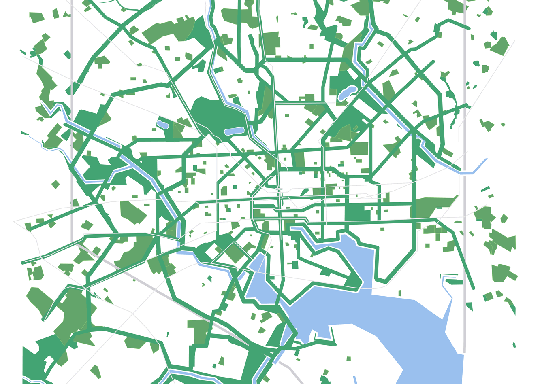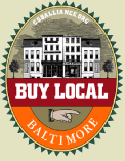
A question I hear a lot from my clients is, what else can I be doing to go green? In addition to helping them to organize what they are already doing in a more systematic way, I always have suggestions of how to take it further. (For a first-hand experience of organizing your thoughts in a systematic way, tune into my special FR*EE call this Thursday, 11/12 at 4:00 p.m. EST, “How to Overcome Green Overload in Your Small Business: 5 Steps for Cutting Through the Clutter.” Follow this link for more info, and to register.)
So. . . .on the topic of taking green a little further. . . .You’re probably aware of studies that have been done on the links between eating animal protein and human health. But have you heard that commercial meat production is a major contributor to climate change? The UN’s Food and Agriculture Organization estimates the global meat industry generates 18% of the man-made greenhouse gas emissions that are accelerating climate change worldwide . . . far more than transportation.
Why not try going meatless one day a week? Since everything is interconnected, you’ll find that the benefits ripple through several other areas, including your health and your wallet. Read more at Meatless Monday, a great resource from the Johns Hopkins University Bloomberg School of Public Health.

Artist and educator Hugh Pocock sent us some very interesting information today. First, he has a solo show at the Contemporary Museum from May 22 through August 16, 2009. My 7-year-old son would adore the show’s title: "MY FOOD — MY POOP ." It’s a brilliant premise: Hugh weighed all the food and drink he took in and the waste he put out over the course of 63 days. Determining these weights and then calculating the differences between them would represent an approximate measurement of each day’s energy production.
He also kept a daily diary of his interactions, thoughts, and activities throughout the project. Entries comment on the importance of the sun for all sources of energy, the role of fossil fuel usage in his daily life, and his body’s continuous cycle of energy transfer. It opened up questions like, "where does the energy go after it leaves my body?" I plan to go to the exhibit and report further. The thought that we contain sunlight reminded me of "Last Hours of Ancient Sunlight ," by Thom Hartmann. One of the first points he makes is that we are all made out of sunlight. "Everything you see alive around you is there because a plant somewhere was able to capture sunlight and store it."
Speaking of plants, Hugh is also teaching an urban farming course this summer at various locations throughout Baltimore. One of them is Participation Park , a 1/3-acre urban farm that was founded by artists in winter, 2007. Artists, being such hands-on people anyway, seem well-disposed to thoughtful engagement in such a deeply hopeful enterprise. The course’s blog currently has a lengthy piece with 10 things learned about compost, with gems like this: "Contrary to popular belief, just leaving waste in a big stupid pile does not magically transform it into dirt."
Three cheers for Hugh’s leadership in waking us up and making us more aware.

In honor of Green Week Baltimore I wanted to highlight a few important efforts that I’ve come across in the past couple of months. The MTA of Maryland has implemented a Green Facts page on their website. This interactive page provides information on all the energy alternatives which are taking place within our Mass Transit system. We currently have 10 hybrid diesel-electric buses and coming soon are some 100% biodiesel conversions and much more. Parks and People Foundation of Baltimore has created the Community Greening Resource Network (CGREN) , a membership program supporting Baltimore City community gardeners with materials like seeds, plants, tools, and educational hand-outs and downloadable PDFs. There are a list of upcoming events and workshops on their calender and ours that include information on composting, rainbarrel systems, etc. This year I’ve signed up to be a member of the Village Green Community Garden in Remington and will be making visits around to as many other community gardens as I can. Check back soon to hear more about the exciting momentum stirring around urban farming city-wide! In addition to active green spaces, the city has also set a goal of increasing its tree canopy from 20 percent to 40 percent. The Growing Home program is an innovative public-private partnership between Baltimore County, Baltimore City, Harford County, 50 local retail nurseries and garden centers, and homeowners to increase the tree canopy in the region by offering homeowners comprehensive education about planting trees and a cash incentive, the $10 Growing Home Tree Coupon redeemable toward the purchase of a qualifying tree with a retail value of at least $25.
I leave you with this quote from critic and urban activist Jane Jacobs, "No one can find what will work for our cities by looking at..suburban garden cities, manipulating scale models, or inventing dream cities. You’ve got to get out and walk." Be the green you wish to see in the world. There are hundreds of ways to get involved. Check our calender for more Green Week Events.
Other urban farming/gardening resources:
Intervale Center
Growing Power
Rhizome Collective
Fresh Start Farm

Recently, I was pulling the meat off a leg of lamb that my husband had cooked in a broth to make soup. My son was there and we started to re-assemble the bones, something he is fond of doing. . . .
The leg bones themselves were one thing, but when we saw how the shin connected that that funny-shaped piece at the bottom. . . and then realized it was the hoof! My heart stopped for a second and I saw that lamb as a very alive little bleating creature. We had eaten its leg with a large group of friends and kids the Sunday night before. I immediately wondered if I am grateful and conscious enough when I eat meat. Of course, the answer is no. I did then say a little prayer of thanksgiving to that lamb who gave its life for our dinner (and others’). The fact that we got so many good meals out of it — at least four more dinners with the soup — is some consolation.
One way to express our gratitude for the bounty we receive is to make the best possible use of it. Don’t waste anything. I ran across a quote from Chogyam Tungpa Rinpoche recently that depression is like smelling your own armpit. To me, that’s such a perfect way of capturing how self-centered and myopic our suffering can be. It strikes me as similarly applicable to our wastefulness. When we sit down to eat leg of lamb and we aren’t aware or thankful, it diminishes our relationship with this amazing, abundant world. It keeps us small and stuck, doesn’t let us feel all those glorious connections and want to celebrate them.
I think our careful extraction of those bones, and their odd-shaped little connector parts, from the veggie goo of that soup stock was one way or remaking our connection. Reweaving. Acknowledging. Toby persisted until he got all three of the small knee pieces to fit, so that he could speculate how the thighbone came into it. Why so much complication at that particular joint? It’s a marvel, really. We were both a little stunned by the extravagance of the forms, the curves and bumps and how they all fit together. Nature’s jigsaw puzzle. Now, think about how many thousands, millions of times that kind of coming together gets designed, engineered, and built in Nature. It puts our puny efforts in their place, that’s for sure.
And I haven’t even said a thing about the pelvis — !
Sign up for our free teleclass: Cultivating a Sense of Awe and Wonder , taking place Friday, April 17 from 2:00 to 3:00 p.m. EST. We are planning a great experience for you!

We thought after posting our article last month about HR875, the Food Safety Modernization Act of 2009, we had done our duty and that was that. All was not quiet, however. My email and Facebook page continue to be inundated with updates, exhortations, and outright pleadings to DO SOMETHING.
Apparently, HR875 has more legs than some people gave it credit for. We’re trying to strike a balance here and give you some updated information about it.
First, read about it on Snopes.com. They are a trusted site for investigating email urban legends, so it’s interesting to see them weighing in on this. From their article, I downloaded a PDF of Myths and Facts from Rep. DeLauro’s office — their attempt to clear up some of the misunderstandings and misinformation out there. The PDF is stored on our group networking site. Members can download it there . (If you’re not a member of the groupsite, take the link and sign up. It’s easy!)
Next, peruse the position taken by the Organic Consumer’s Association. From an article on their site : "For the record, Organic Consumers Association does have an alert on HR875 . As OCA points out in our Action Alert, we cannot support a ‘food safety’ bill unless it provides protection or exemptions for organic and farm-to-consumer producers and cracks down on the real corporate criminals who are tampering with and polluting our nation’s food supply."
Well said, OCA!

During WWII, Victory Gardens advertised that the war effort could be supported with the help of every American by planting their very own backyard garden. In the early 40’s these gardens produced up to 40 percent of all the vegetable produce being consumed nationally, not to mention positive community growth. This kind of practice, one that gave each American the sense of empowerment, as well as health and well-being during a time of war is now being seen as a major threat to industrial seed producers like Monsanto, ADM, Sodexo, Dupont and Tyson. These companies aren’t just nasty corporations, but are makers of Genetically Modified foods which means they are patenting and branding seeds so that what you grow will be owned by them not you. Read more about Monsanto here . A more disheartening thought is that these companies have a stronghold within the United States government! Heads of the Department of Agriculture since the late 1970’s have worked with Monsanto including Tom Visack, Agriculture’s director for the Obama Administration. I have just read news of a devastating bill that is supposedly on its way to Congress. Its about criminalizing organic farming and could include you, the backyard farmer . A few highlights include the following from the Campaign For Liberty website where you can read the plan in more detail:
Red flags the Campaign for Liberty found ………..
- Legally binds state agriculture departments to enforce federal guidelines, effectively taking away the states’ power to do anything other than act as food police for the federal dept.
- Effectively criminalizes organic farming but doesn’t actually use the word organic.
- Affects anyone growing food even if they are not selling it but consuming it.
- Affects anyone producing meat of any kind including wild game.
- Legislation is so broad based that every aspect of growing or producing food can be made illegal. There are no specifics, which is bizarre considering how long the legislation is.
Things you can do…… Continued

Recently, we started in earnest to learn all we can about the blogging world, including how to increase our site traffic so we can continue to offer GOforChange to our community and the wider world. Naturally, we enrolled in Upstart Blogger’s 30-Day Blogging Course . We are known mostly within our own networks, where we reliably preach to the converted. But what about people who are just waking up to environmental and economic challenges? With our expertise, wealth of information, online forums, calendar, and marketplace, we are determined to reach a wider audience.
We started GOforChange in early 2008 to help spread the word about the growing sustainability , local food , social justice, and greening movement in the Baltimore area. A blog was the right format to share information about upcoming events, volunteers opportunities, advice, and all the organizations and businesses in our area that are working for a better world. We are always learning about new things — community gardens, energy auditors, local artisans, schools — and the list of topics keeps growing. We continue to believe that reliable information about local resources is valuable to people who want to know how they can make a difference in their daily lives and communities.
As of Day 5 of the course, we have already learned much about social networks, Technorati rankings , Google Analytics, and reaching out to like-minded blogs. We are shifting our posts to offer more advice, musings, and stories from Julie’s work as a green architect and sustainability consultant, and Alyssa’s hands-on artistry in urban gardening, composting, and other DIY projects. Interspersed with posts about Baltimore-area topics, these will have a broad appeal beyond our geographic region. The Upstart Blogger course is something we probably should have taken six months ago, but back then we just didn’t realize how much we don’t know! Stay tuned for updates on our progress.






 View the dynamic, moving GOforChange: Greening Baltimore video
View the dynamic, moving GOforChange: Greening Baltimore video






